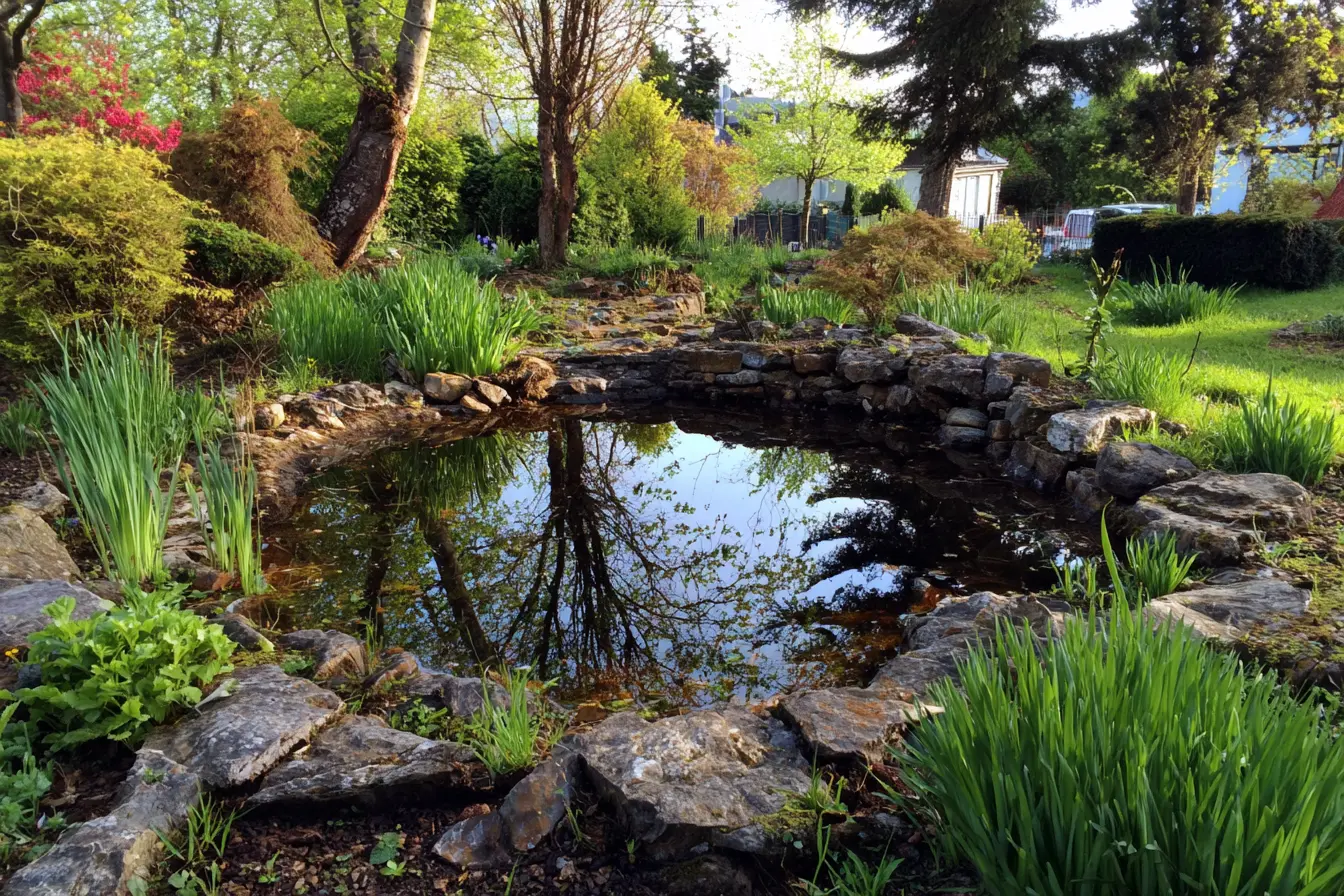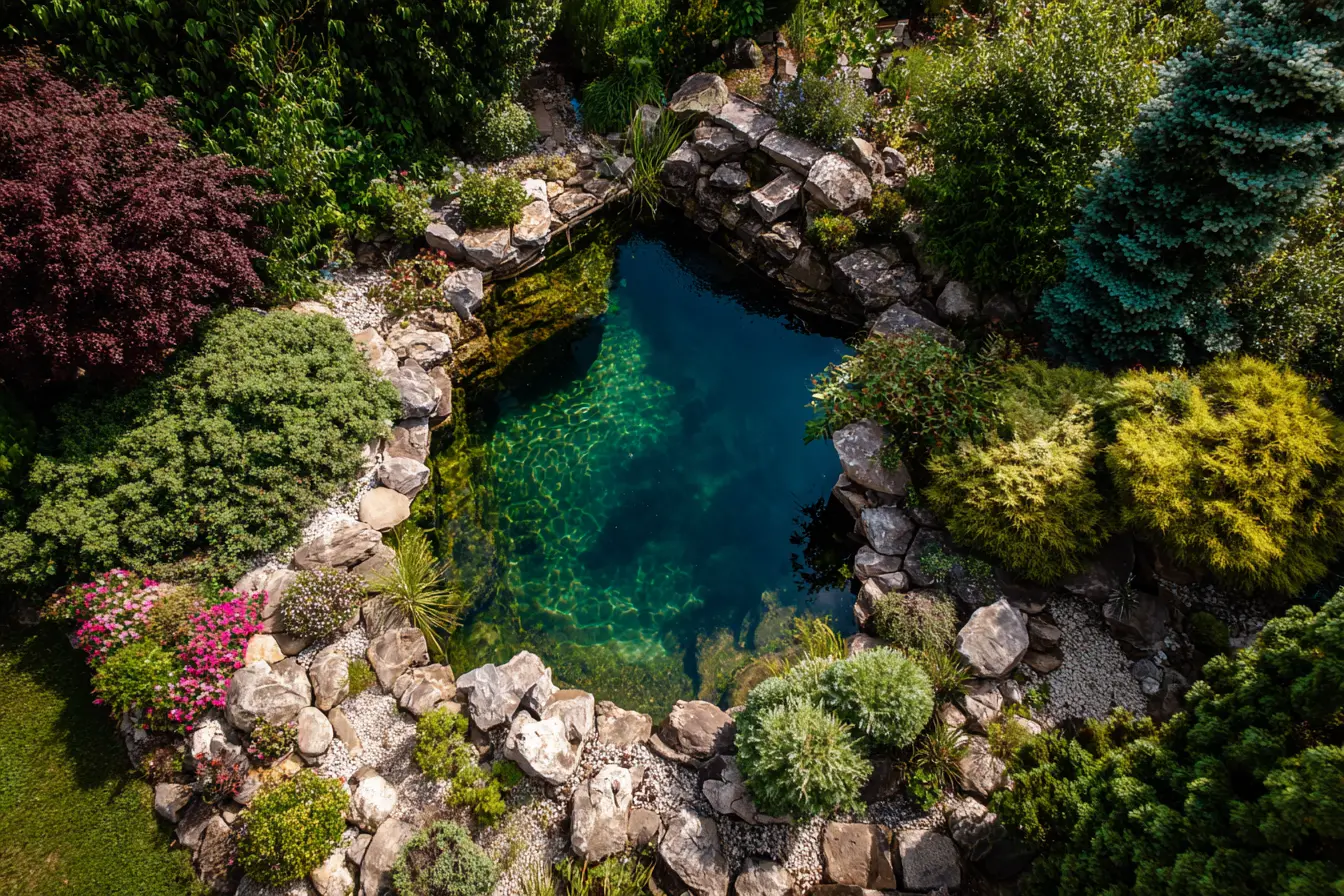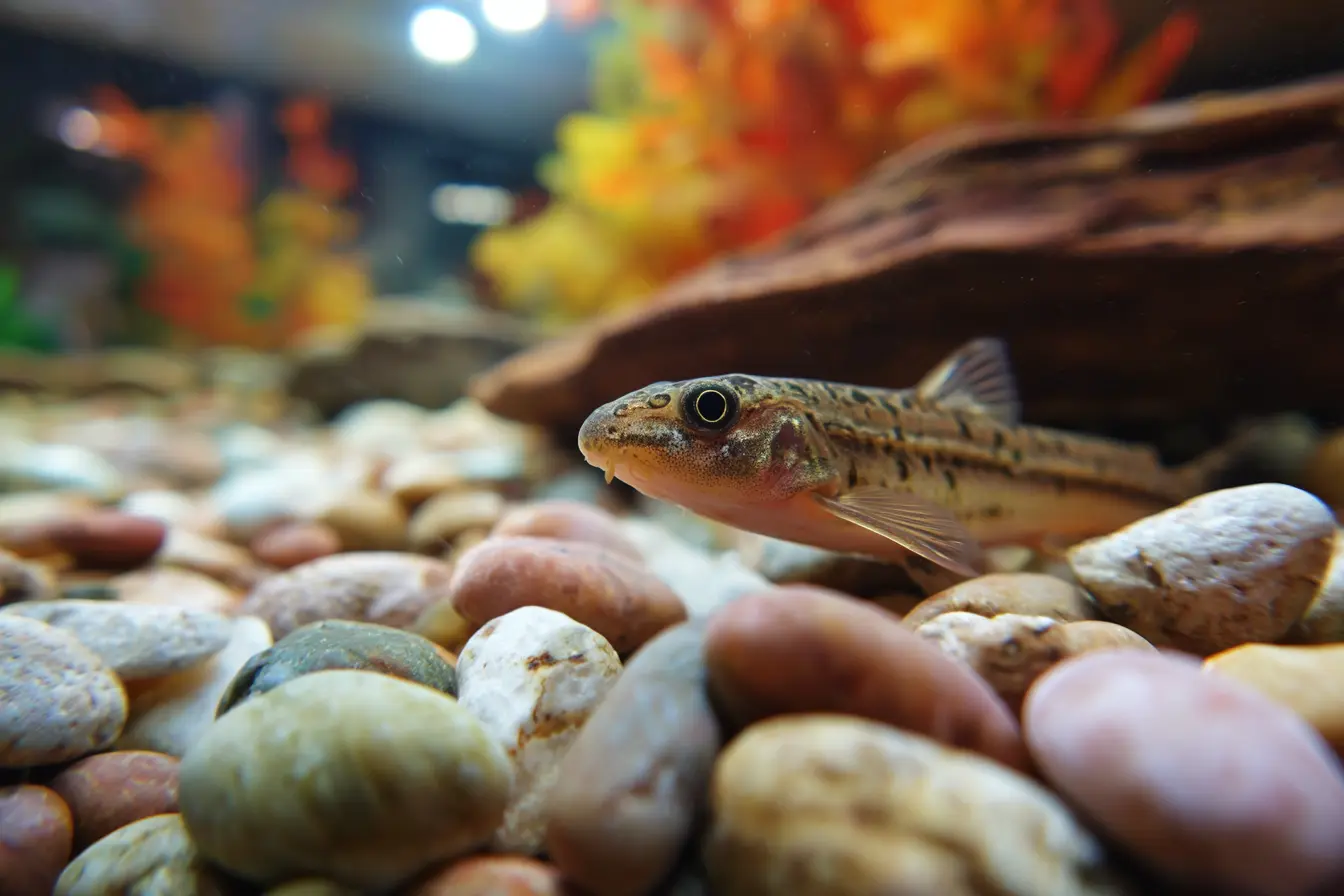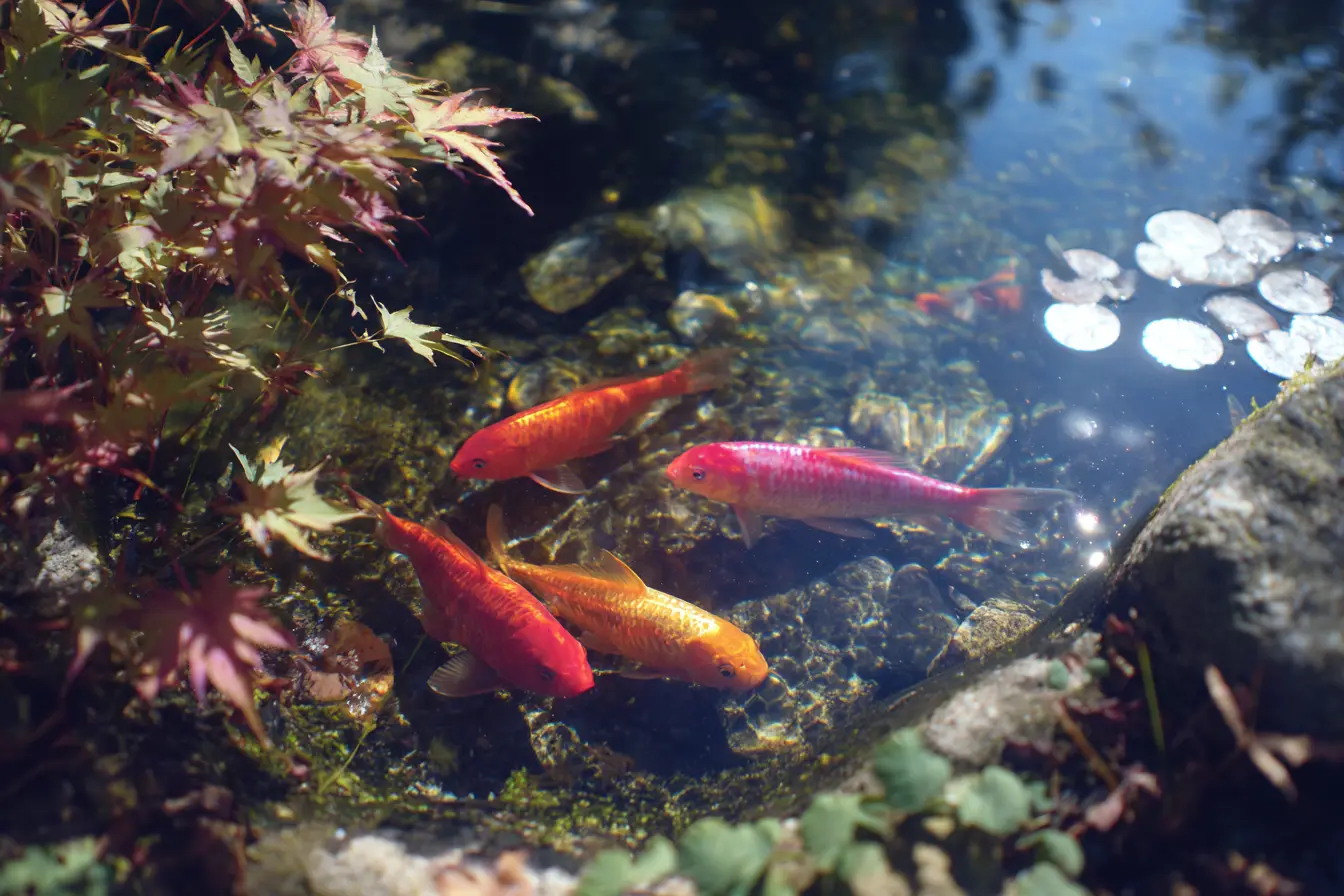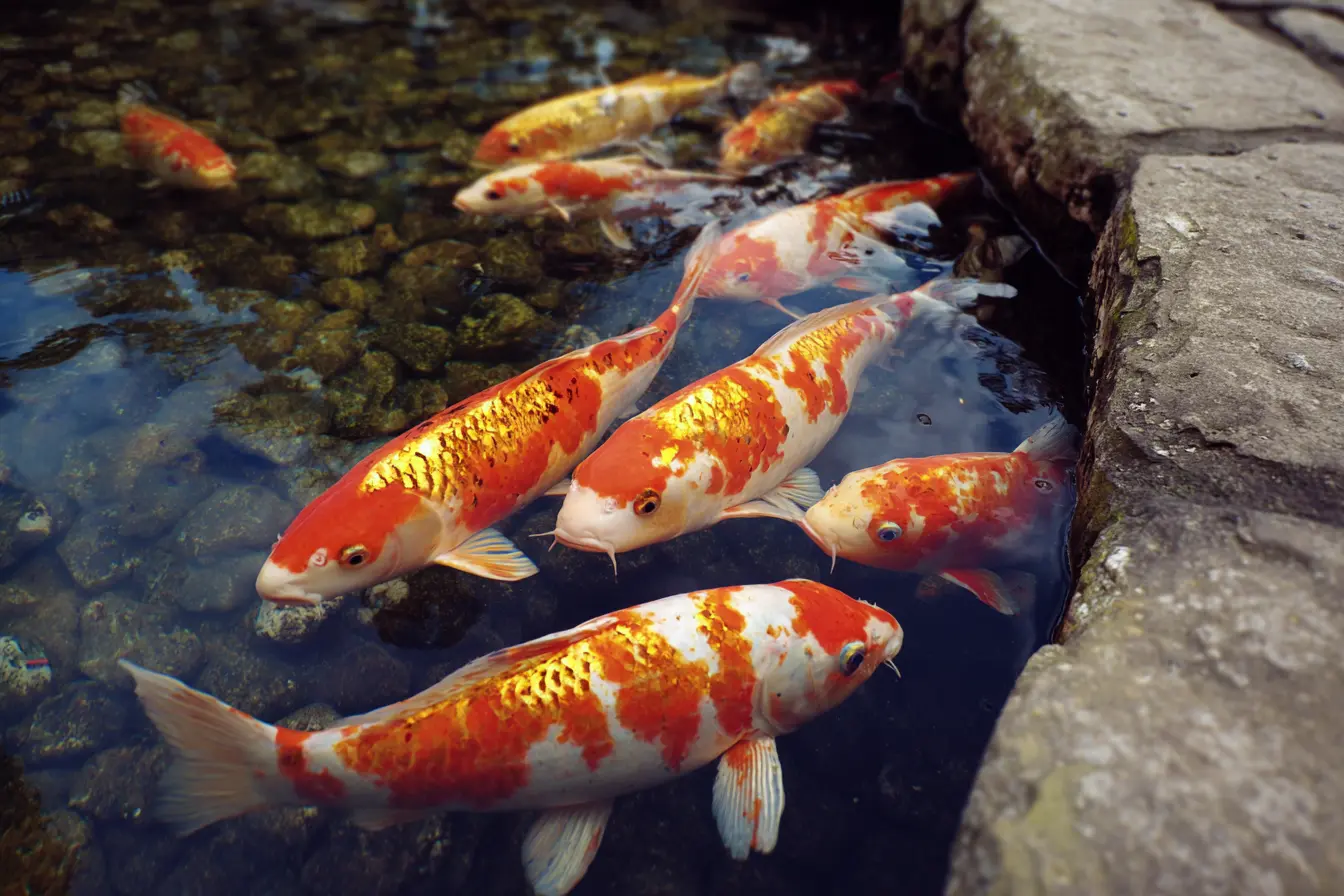
Keeping Koi: A Complete Guide to Healthy, Thriving Fish
Koi are often considered the jewel of the garden pond, known for their stunning colours, graceful swimming, and peaceful presence. Originating in Japan, these ornamental carp have been bred for centuries to create the beautiful varieties we see today. However, koi require more care and attention than other pond fish, especially when it comes to water quality, space, and nutrition. Here’s everything you need to know to keep your koi healthy, vibrant, and thriving in your UK pond.
Choosing Koi for Your Pond
Koi come in many varieties, each with unique colours and patterns. Some popular varieties include:
- Kohaku: White with red markings.
- Sanke: White with red and black markings.
- Showa: Black with red and white markings.
- Ogons: Metallic, single-colour koi, often gold or platinum.
When choosing koi, look for healthy, active fish with clear eyes, smooth skin, and strong, symmetrical fins. Avoid fish that have torn fins, dull colour, or signs of parasites such as white spots or redness.
Creating the Perfect Pond Environment
Pond Size and Depth
Koi are large, fast-growing fish that need a spacious pond:
- Minimum pond size: At least 5,000 litres (1,100 gallons) for a small group of koi, but larger is better.
- Pond depth: At least 1.2 metres (4 feet) deep to help koi overwinter safely and to protect them from predators.
A large, deep pond not only gives koi plenty of swimming space but also helps maintain stable water temperatures and reduces the risk of overheating in summer.
Filtration and Aeration
Koi produce a lot of waste, so a robust filtration system is essential:
- Mechanical filtration: Removes solid waste and debris.
- Biological filtration: Breaks down harmful ammonia and nitrite using beneficial bacteria.
In addition to filtration, aeration is crucial. Koi require high oxygen levels, particularly during warm weather. Use an air pump, waterfall, or fountain to keep water moving and well-oxygenated.
Water Quality
Excellent water quality is critical for koi health. Regular testing is a must. Key parameters include:
- pH: Between 7.0 and 8.0.
- Ammonia: Should be zero.
- Nitrite: Should be zero.
- Nitrate: Ideally below 40 ppm to avoid algae problems.
Test water every week, especially during the summer when fish are more active and water quality can change quickly. If levels are off, perform partial water changes (about 10–20%) to restore balance.
Feeding Your Koi
Koi are omnivores with a varied diet:
- Staple diet: High-quality koi pellets designed to promote growth and enhance colour.
- Seasonal feeding: In warmer months, feed a high-protein food to support growth. In autumn and spring, switch to a wheatgerm-based food, which is easier to digest in cooler temperatures.
- Natural foods: Koi will also nibble on algae, insects, and aquatic plants.
Feed your koi 2–3 times daily in the summer, offering only as much food as they can consume in a few minutes. As temperatures fall below 10°C in autumn, reduce feeding gradually and stop altogether in winter, as koi digestion slows dramatically in cold water.
Seasonal Care and Maintenance
Spring
- Restart filtration and clean any equipment you shut down for winter.
- Perform partial water changes to refresh the pond after winter.
- Begin feeding your koi once water temperatures are consistently above 10°C.
Summer
- Keep an eye on oxygen levels, especially during hot spells.
- Provide shade with floating plants like water lilies to keep water cool and reduce algae.
- Watch for signs of parasites and treat as needed.
Autumn
- Reduce feeding as water temperatures drop.
- Skim out fallen leaves and prune dying plant material.
- Prepare your pond for winter by checking equipment and removing sludge.
Winter
- Stop feeding when water temperatures consistently fall below 10°C.
- Keep part of the pond ice-free using a pond heater, air stone, or de-icer to allow for gas exchange.
- Avoid disturbing your koi as they rest in deeper water.
Health and Common Issues
Healthy koi are active, with bright colours and a good appetite. Keep an eye out for these common issues:
- Ich (white spot): Small white cysts on skin and fins.
- Fin rot: Ragged or discoloured fins.
- Ulcers or sores: Red patches or open wounds.
- Flashing: Koi rubbing against objects, often a sign of irritation or parasites.
If you see signs of illness, test water quality first and correct any issues. Use appropriate treatments as needed, following the product instructions carefully.
Adding New Koi to Your Pond
Introducing new koi should be done with care to prevent disease and stress:
- Quarantine new koi in a separate tank for at least 2–4 weeks to ensure they’re healthy.
- Acclimatise slowly: Float the bag in the pond for 15–20 minutes to equalise temperature, then add pond water gradually over another 15–20 minutes before releasing the fish.
- Add koi in small groups to prevent overwhelming your filtration system.
Supporting a Balanced Ecosystem
A healthy koi pond includes more than just fish:
- Aquatic plants: Marginal plants like water iris, submerged plants like hornwort, and floating plants like water lilies help oxygenate and shade the water.
- Wildlife: Frogs, dragonflies, and other creatures add to the pond’s natural balance and beauty.
Plants also help absorb nutrients that would otherwise feed algae, keeping your pond clearer and healthier.
Conclusion
Keeping koi is a rewarding hobby that brings colour and movement to your garden. With a well-designed pond, high water quality, and attention to their seasonal needs, your koi will grow large, display their full beauty, and bring you years of enjoyment.
Vets near you
Speciality vets
- Aquatics vet specialists
- Birds vet specialists
- Camelids vet specialists
- Cats vet specialists
- Cattle vet specialists
- Deer vet specialists
- Dogs vet specialists
- Equines vet specialists
- Exotic vet specialists
- Goats vet specialists
- Pigs vet specialists
- Poultry vet specialists
- Sheep vet specialists
- Small Mammals vet specialists
- Wild vet specialists
